Complete Solutions to Illustration of chapter RIGID BODY DYNAMICS 1 of Class 11 book with complete answers and questions
| Class 11 | PHYSICS |
| Chapter | RIGID BODY DYNAMICS 1 |
| CENGAGE PHYSICS | Illustration |
| Number Of Questions | 39 |
| Academic Year | 2023-24 |
A uniform rod of length `l` is spinning with an angular velocity `omega=2v/l` while its centre of mass moves with a velocity `v`. Find the velocity of the end of the rod.
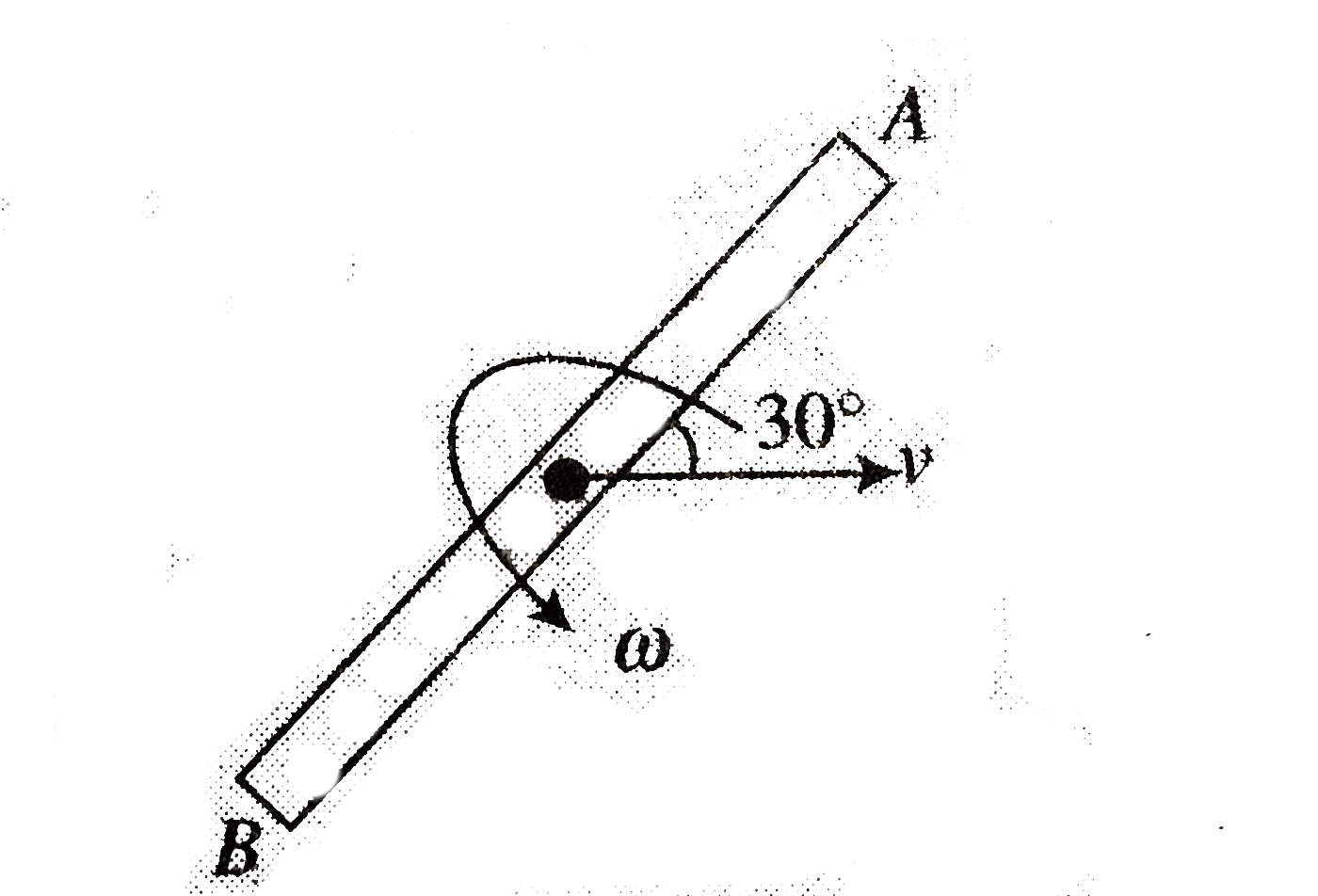 04:04View Solution
04:04View SolutionThe ends `A` and `B` of a eod of length `l` have velocities of magnitudes `|vecv_(A)|=v` and `|vecv_(B)|=2v` respectively. If the inclination of `vecv_(A)` relationn to the rod is `alpha` find the
a. Inclination `beta` of `vecc_(B)` relative of the rod.
b. angular velocity of the rod.
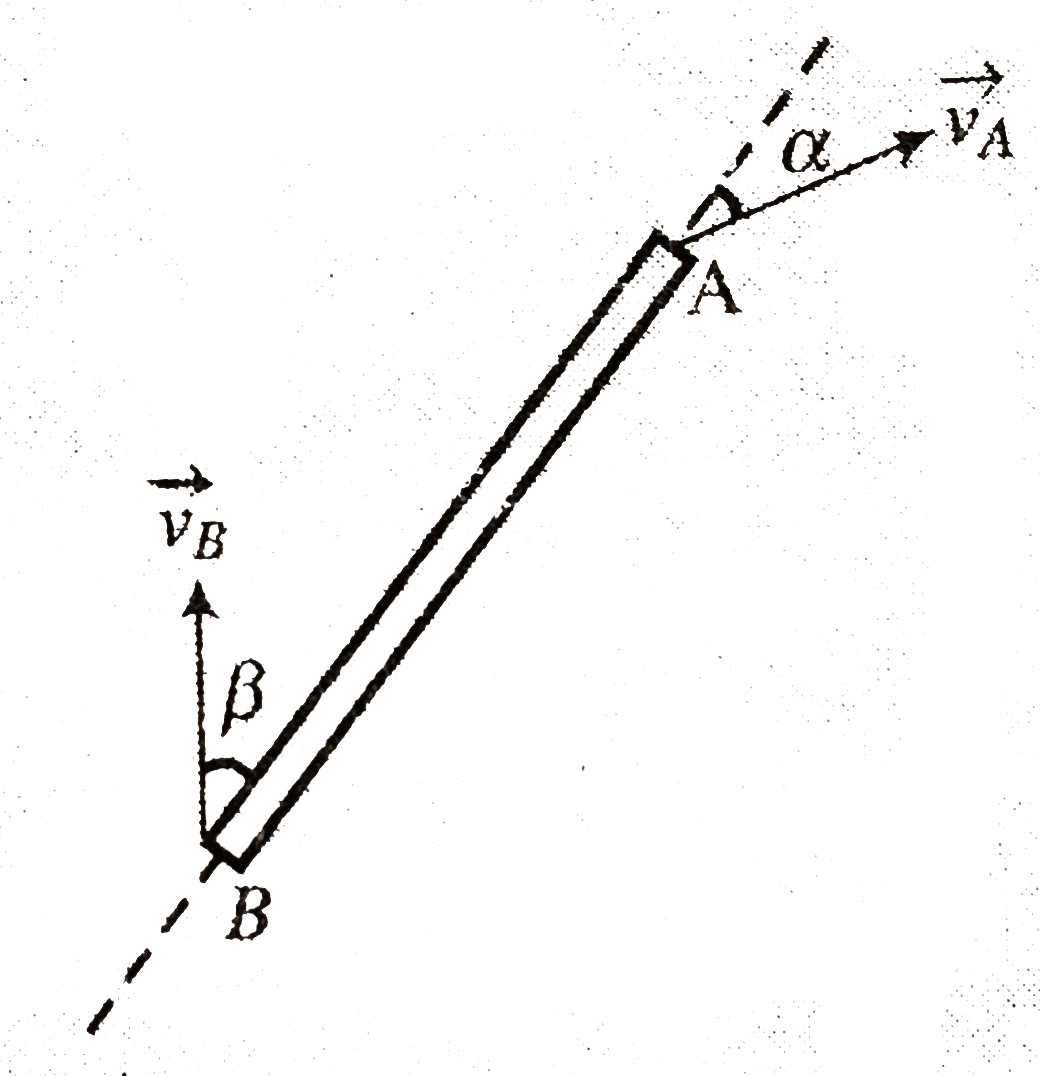 03:38View Solution
03:38View SolutionA uniiform disc of radius `r` spins with angular velocity `omega` and angular acceleration `alpha`. If the centre of mass of the disc has linear acceleration `a`, find the magnitude and direction of aceeleration of the point `1,2`, and `3`.
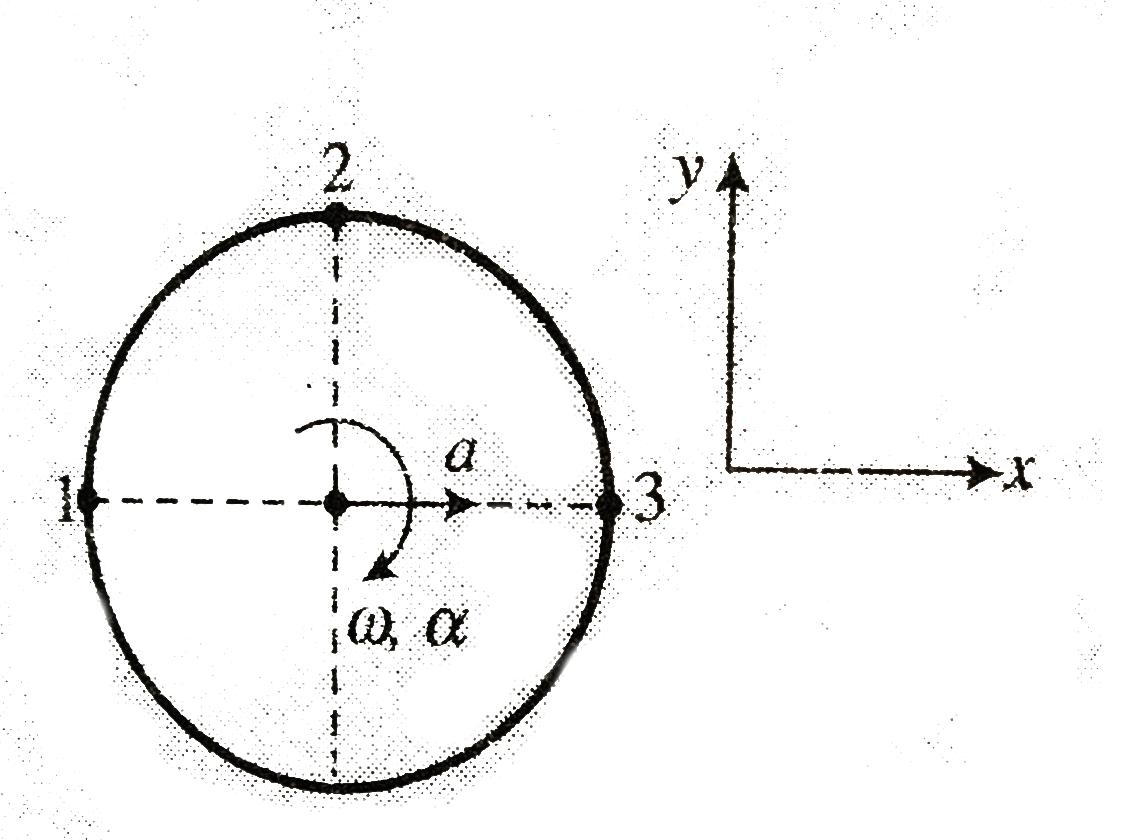 07:46View Solution
07:46View SolutionA rod of length `l` is moving in a vertical plane (`x-y`) when the lowest point `A` of the rod is moved with a velocity `v`. find the a angular velocity of the rod and `b` velocity of the end `B`.
 03:34View Solution
03:34View SolutionFind the instantneous axis of rotation of a rod length `l` when its end `A` moves with a velocity `vecv_(A)=Vi` and the rod rotates with an angular velocity `vecomega=-v/(2l)hatk`.
 03:13View Solution
03:13View SolutionFour particles each of mass 'm' are kept at the four corners of a square of edge 'a'. Find the moment of inertia of the system about a line perpendicular to the plane of the square and passing through the center of the square.
03:18View SolutionA uniform rod of mass `m` and length `l_(0)` is rotating with a constant angular speed `omega` about a vertical axis passing through its point of suspension. Find the moment of inertia of the rod about the axis of rotation if it make an angle `theta` to the vertical (axis of rotation).
02:51View SolutionCalculate the moment of inertia of a ring having mass `M`, radius `R `and having uniform mass distribution about an axis passing through the centre of the ring and perpendicular to the plane of the ring?
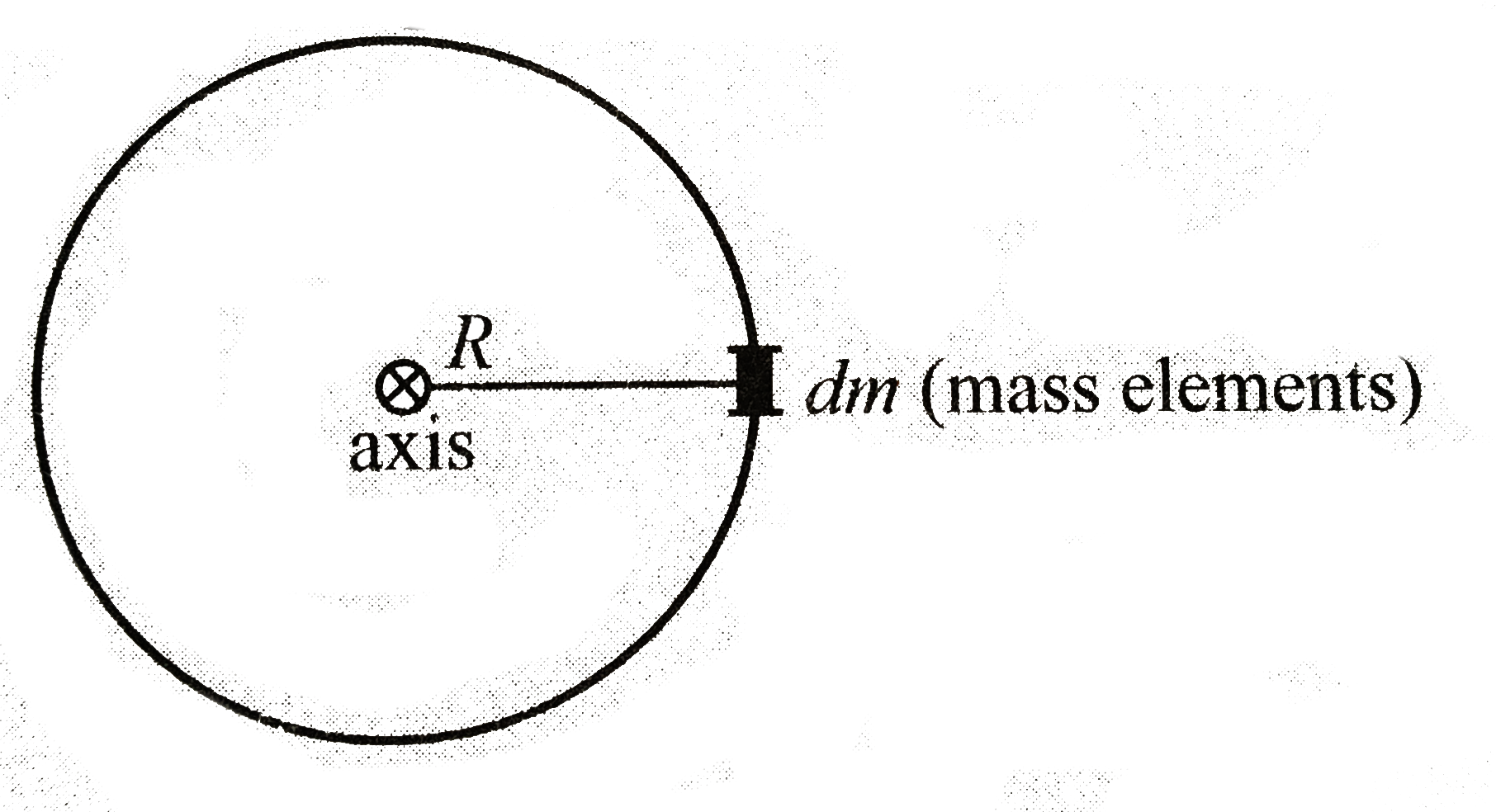 02:30View Solution
02:30View SolutionCalculate the moment of inertia of a uniform rod of mass `M` and length `l` about an axis passing through an end and perpendicular to the rod. The rod can be divided into a number of mass elements along the length of the rod.
 01:28View Solution
01:28View SolutionFind the moment of inertia of a circular disk or solid cylinder of radius `R` about the axis through the centre and perpendicular to the flat surface.
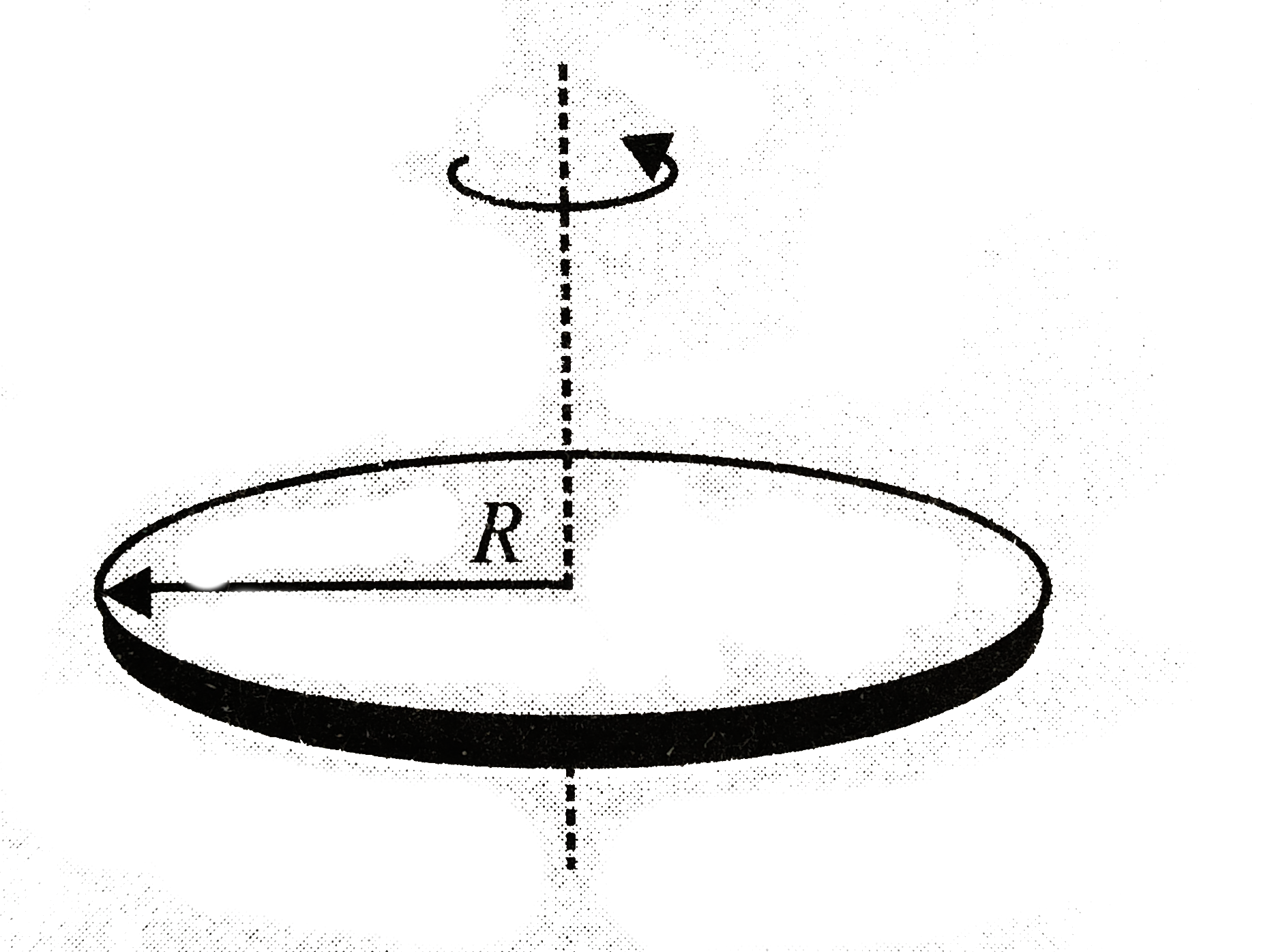 02:35View Solution
02:35View SolutionTwo uniform identicla rods each of mass M and length l are joined to form a cross as shown in figure. Find the momet of inertia of the cross about a bisector as shown doted in the figure
 02:57View Solution
02:57View SolutionFind the moment of inertia of a solid cylinder of mass M and radius R about a line parallel to the axis of the cylinder and on the surface of the cylinder.
02:32View SolutionCalculate the moment of inertia of
a. a ring of mass `M` and radius `R` about an axis coinciding with the diameter of the ring.
b. as thin disc about an axis coinciding with the diameter.03:43View SolutionFind the out the moment of inertia of a ring having uniform mass distribution of mass `M` and radius `R` about an axis which is tangent ot the ring and `a` in the plane of the ring `b`. perpendicular to the plane of the ring.
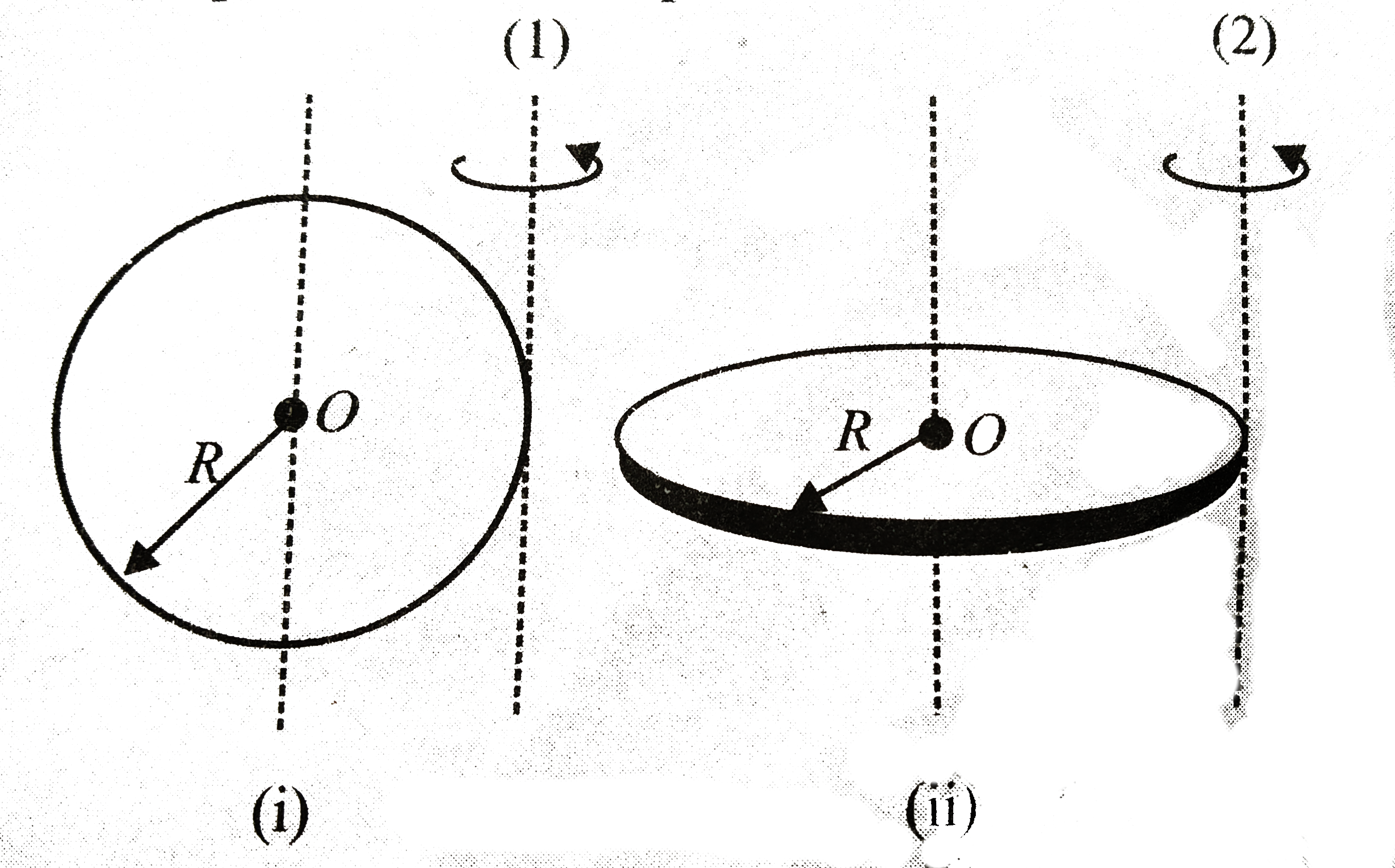 03:57View Solution
03:57View SolutionTwo uniform solid of masses `m_(1)` and `m_(2)` and radii `r_(1)` and `r_(2)` respectively, are connected at the ends of a uniform rod of length `l` and mass `m`. Find the moment of inertia of the system about an axis perpendicular to the rod and passing through a point at a distance of a from the centre of mass of the rod as shown in figure.
 02:26View Solution
02:26View SolutionThere are four solid balls with their centres at the four corners of a square of side `a`. the mass of each sphere is `m` and radius is `r`. Find the moment of inertia of the system about one of the sides of the square
03:24View SolutionA circular hole of radius `R//2` is cut from a circular disc of radius `R`. The disc lies in the `xy`-plane and its centre coincides with the origin. If the remaining mass of the disc is `M`, then
a. determine the initial mass of the disc and
b. determine its moment of inertia about the `z`-axis.
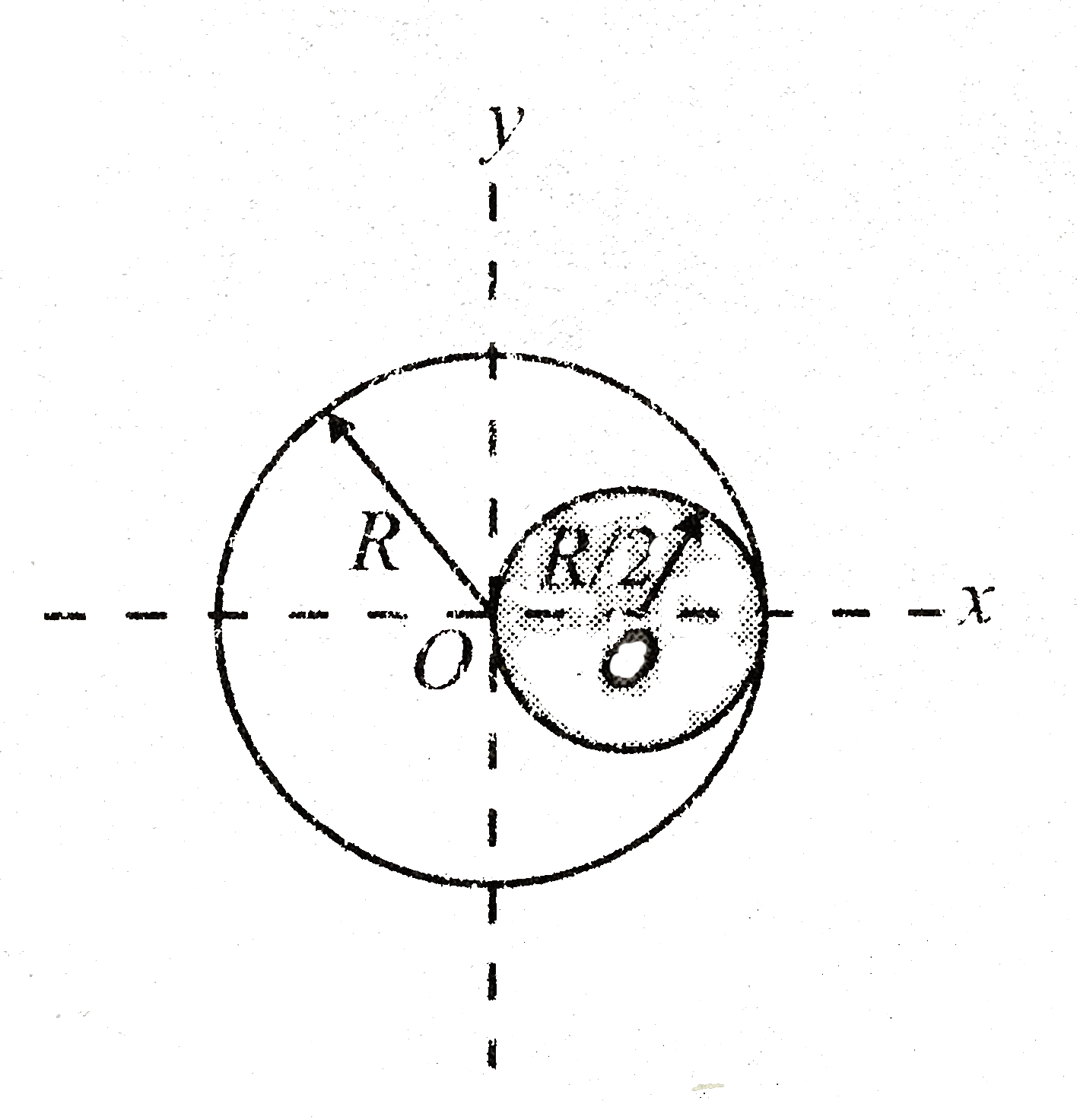 05:31View Solution
05:31View SolutionThree identical thin rods, each of mass `m` and length `l`, are joined to form an equilateral triangular frame. Find the moment of inertia of the frame about an axis parallel to tis one side and passing through the opposite vertex. Also find its radius of gyration about the given axis.
09:00View SolutionA particle of mass `m` is released in vertical plane from a point `P` at `x=x_(0)` on the `x`-axis. It falls vertically parallel to the `y`-axis. Find the torque `tau` acting on the particle at a time about origin.
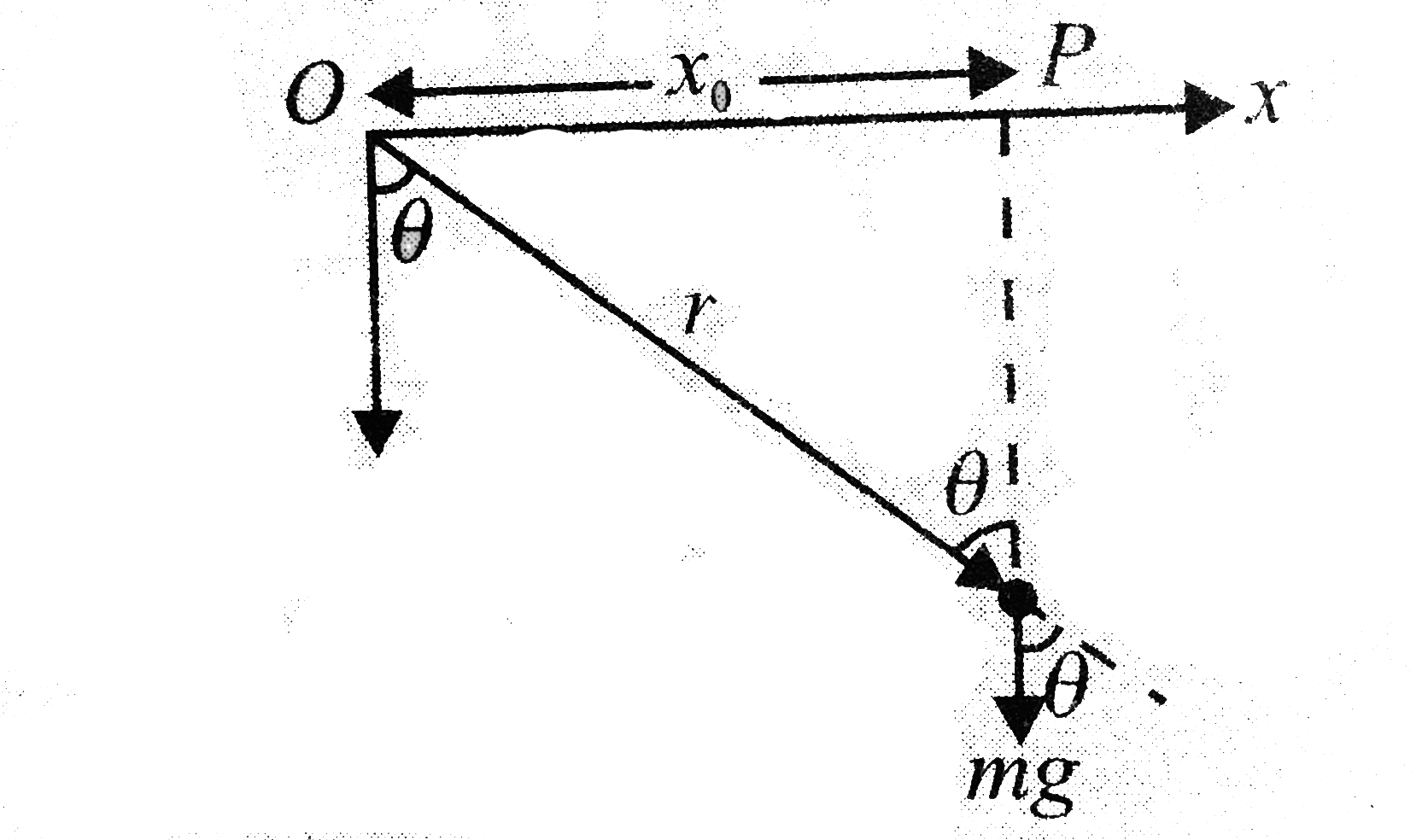 02:03View Solution
02:03View SolutionDetermine the point of application of force, when forces of `20 N` and `30 N` are acting on rod as shown in figure.
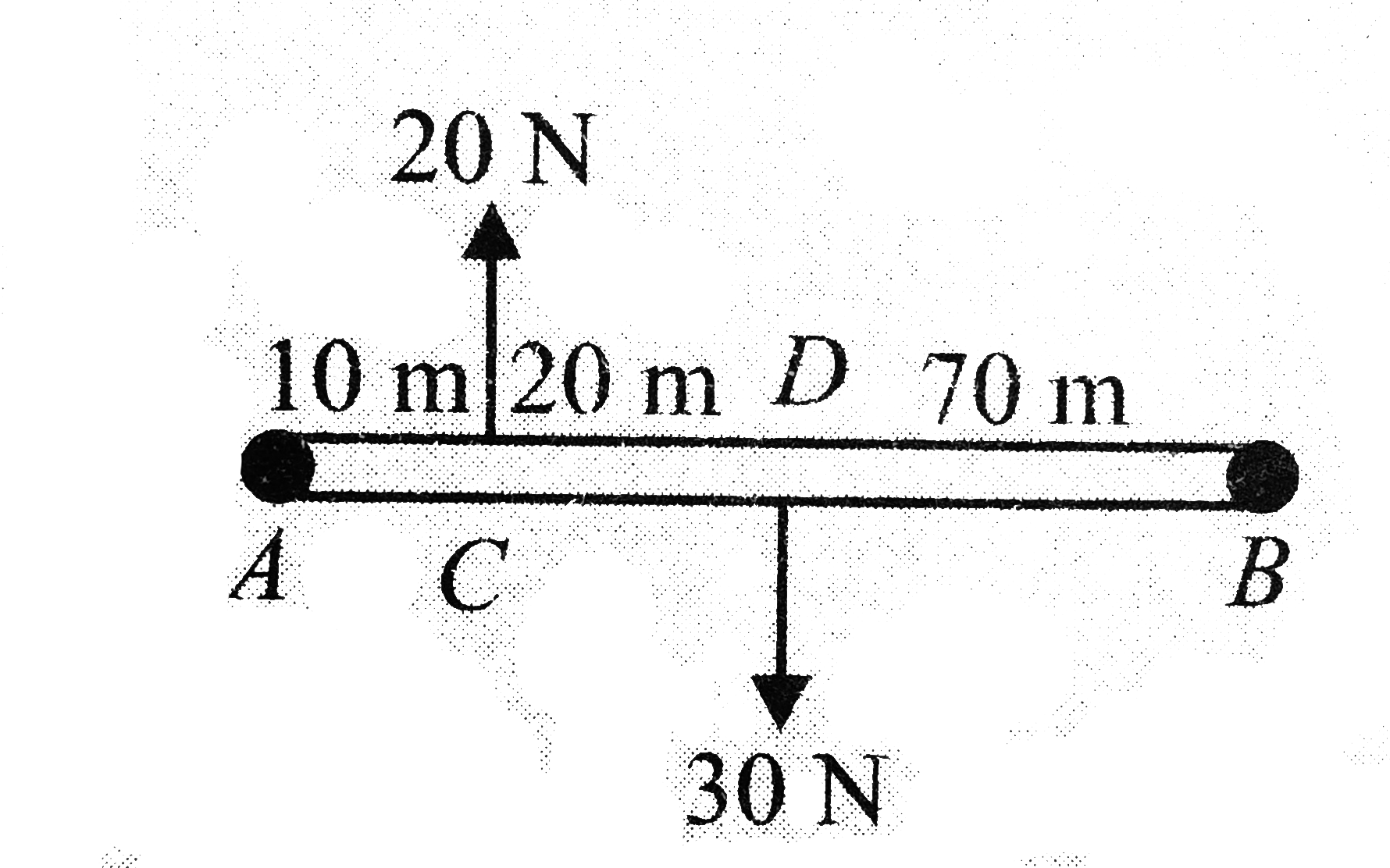 02:02View Solution
02:02View SolutionIn a circus show are used large numbers of light boards, each of which can rotate around a fixed fulcrum. Fulcrum of reach board divides the length of the board in ration `2:1`. At the one end of the left most board is placed a small block of mass `30 kg` and a team of clowns stand keeping their feel at the ends of adjacent boards as shown in figure. the mass of each clown is `80 kg`. What maximum number of clowns can keep balance in this way?
 07:11View Solution
07:11View SolutionTwo small kids weighing 10 kg and 15 kg respectively are trying to balance a seesaw of total length 5.0 with the fulcrum at the centre. If one of the kids is sitting at an end where should the other sit?
03:43View Solution`A` rod `AB` rests with the end `A` on rough horizontal ground and the end `B` against a smooth vertical wall. The rod is uniform and of weight w. If the rod is in equilibrium in the position shown in figure.Find
(a)frictional force shown at `A`
(b) normal reaction at `A`
(c) normal reaction at `B`.
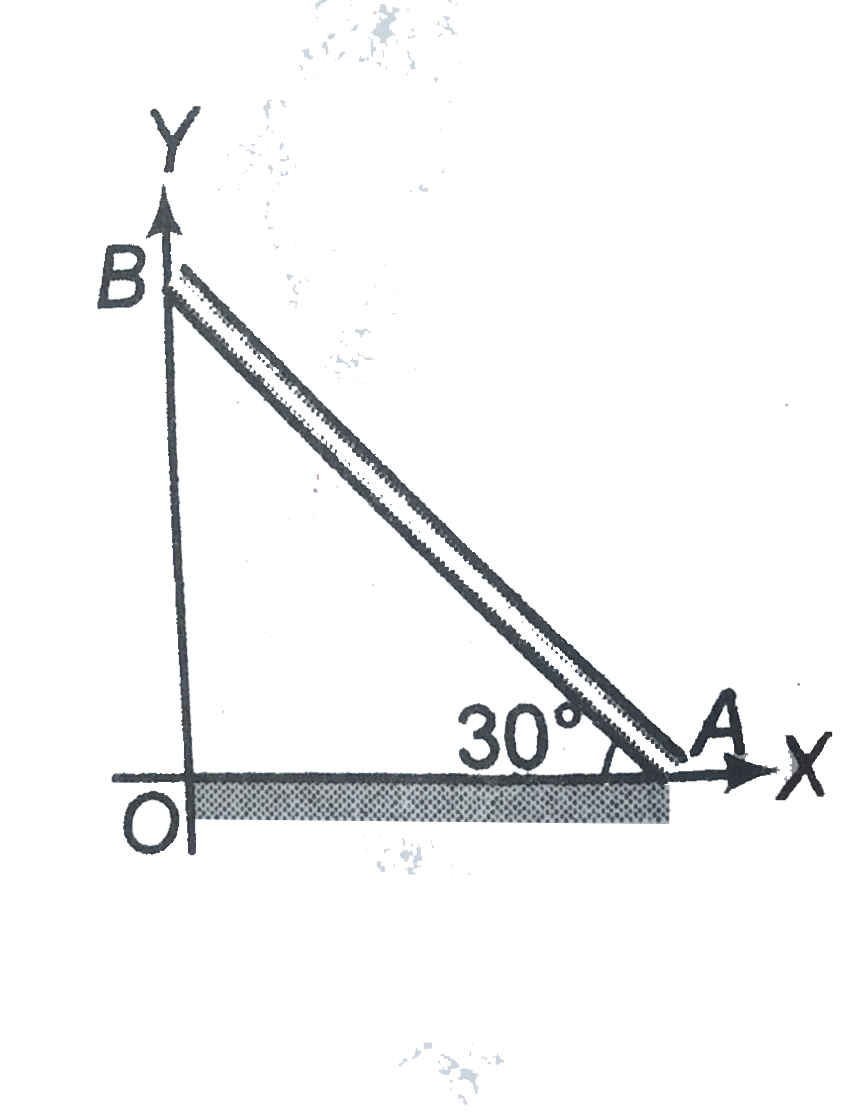 07:10View Solution
07:10View SolutionAt the bottom edge of a smooth wall , an inclined plane is kept at an angle of `45^(@)` . A uniform ladder of length `l` and mass `M` rests on the inclined plane against the wall such that it is perpendicular to the inclined.
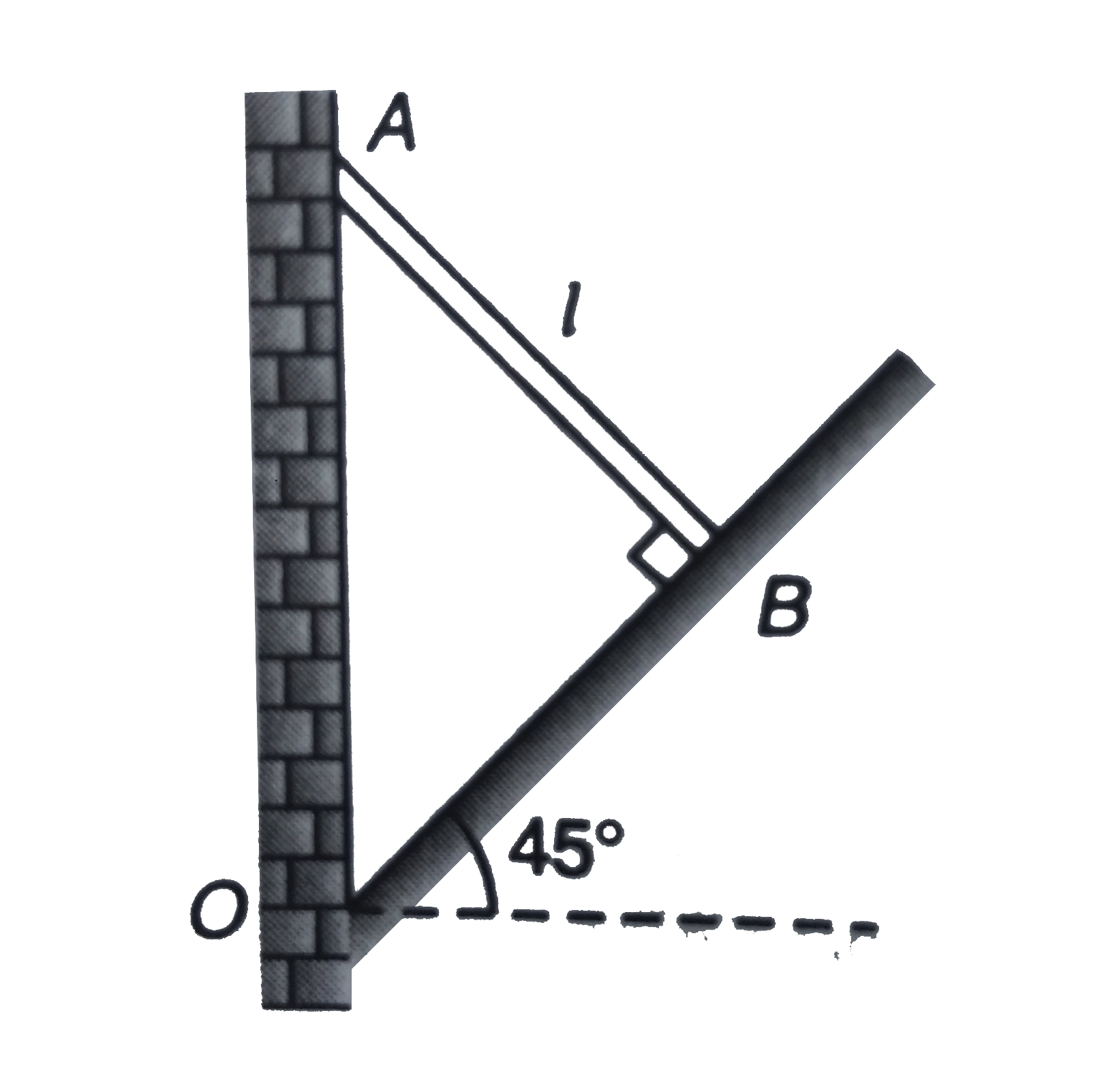
(a) if the plane is also smooth ,which way will the ladder slide .
(b) What is the minimum coefficient of friction neccessary so that the ladder does not slip on the inclined?04:29View SolutionA horizontal force `F` is applied to a homogeneous rectangular block of mass `m`, width `b` and height `H`. The block moves with constant velocity, the coefficient of friction is `mu_(k)`.
a. What is the greater height `h` at which the force `F` can be applied so that the block will slide without tipping over ?

b. Through which point on the bottom face of the block will the resultant of the friction and normal forces act if `h=H//2?`
c. If the block is at rest and coefficient of static friction is `mu_(s)` what are the various criteria for which sliding or tipping occurs?15:19View SolutionA cube of side a is placed on an inclined plane of inclination `theta`. What is the maximum value of `theta` for which the cube will not topple?
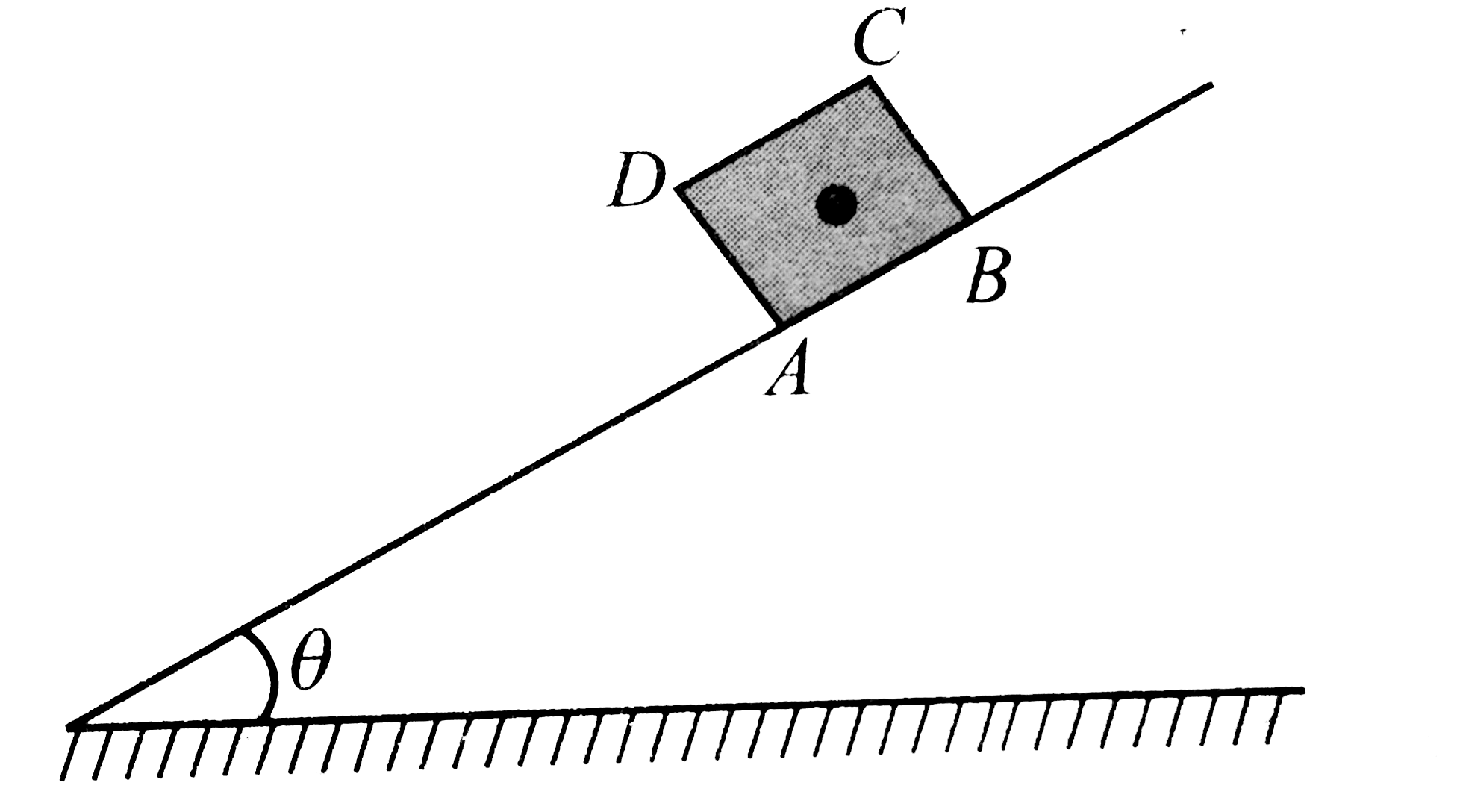 02:12View Solution
02:12View SolutionA tall block of mass `M=50kg` and base width `b=1 m` and height `h=3 m` is kept on rough inclined surface with coefficient of friction `mu=0.8` as shown in figure. The angle of inclination with the horizontal is `37^@`. Determine whether the block slides down or topples over.
 05:16View Solution
05:16View SolutionDetermine the maximum ratio `h//b` for which the homogenous block will side without tipping under the actionof force `P`. The coefficient of static friction between the block and the incline is `mu_(s)`.
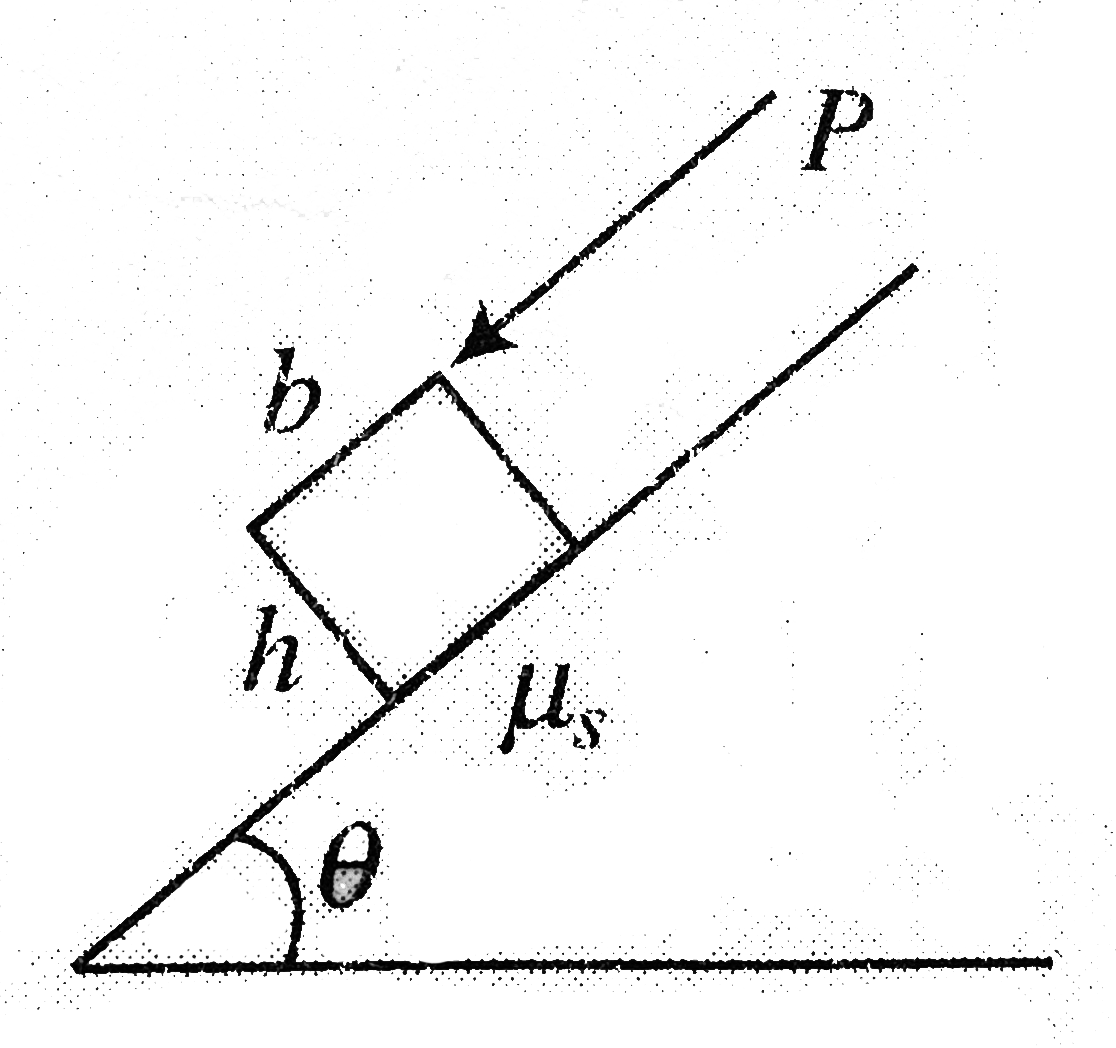 05:57View Solution
05:57View Solutionthe door of an almirah is 6 ft high, 1.5 ft wide and weights 8 kg. The door is supported by two hinges situated at a distance of 1 ft from the ends. If the magnitude of the forces exerted by the hinges on the door are equal find this magnitude.
07:01View SolutionA cotton reel of mass `m` and moment of inertia `I` is kept at rest on as smooth horizontal surface. The reel has inner and other radius `r` and `R` respectively. A horizontal force `F` starts actings as shown in figure. Find the

a. acceleration of the centre of mass of reel.
b. angular acceleration of the reel
c. net acceleration of point of contact.02:54View SolutionA uniform rod of mass `m` and length `l` is in equilibrium under the action of constraint forces, gravity and tension in the string. Find the
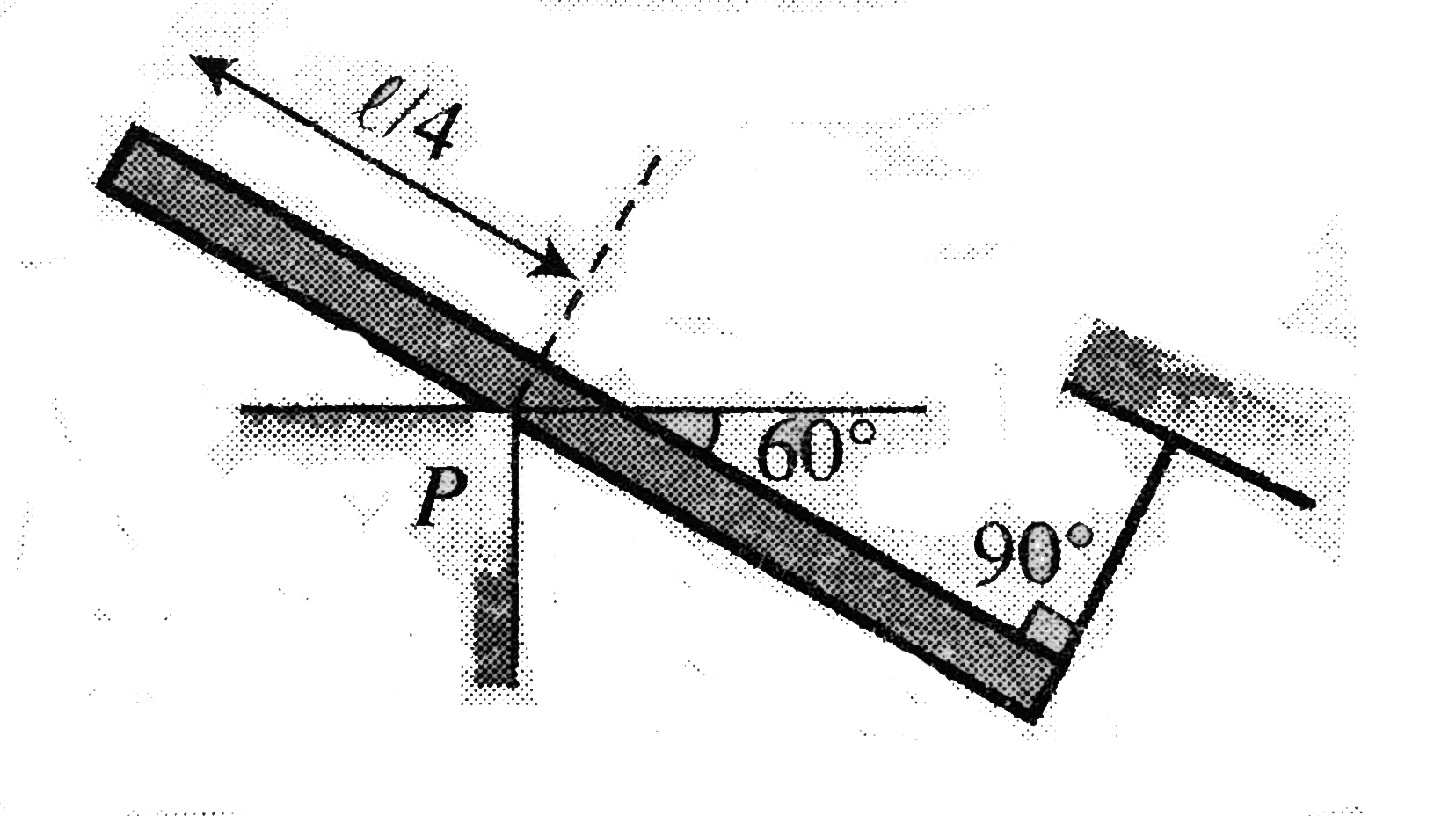
a. frictional force acting on the rod.
b. tension in the string.
c. normal reaction on the rod.
Now, the string is cut. Find the
d. angular acceleratiion of the rod just after the string is cut.
e. normal reaction on the rod just after the string is cut.08:48View SolutionIn figure calculate the linear acceleration of the blocks.
Mass of block `B= 8kg`
mass of disc shaped pulley `=2kg` (take `g=10m//s^(2)`)
 06:20View Solution
06:20View SolutionA block of mass `m` is attached at the end of an inextensible string which is wound over a rough pulley of mass `M` and radius `R` figure a. Assume the string does not slide over the pulley. Find the acceleration of the block when released.
03:05View SolutionIn figure mass `m_(1)` slides without friction on the horizontal surface, the frictionless pulley is in the form of a cylinder of mass `M` and radius `R`, and a string turns the pulley without slipping. Find the acceleration of each mass, and tension in each part of the string.
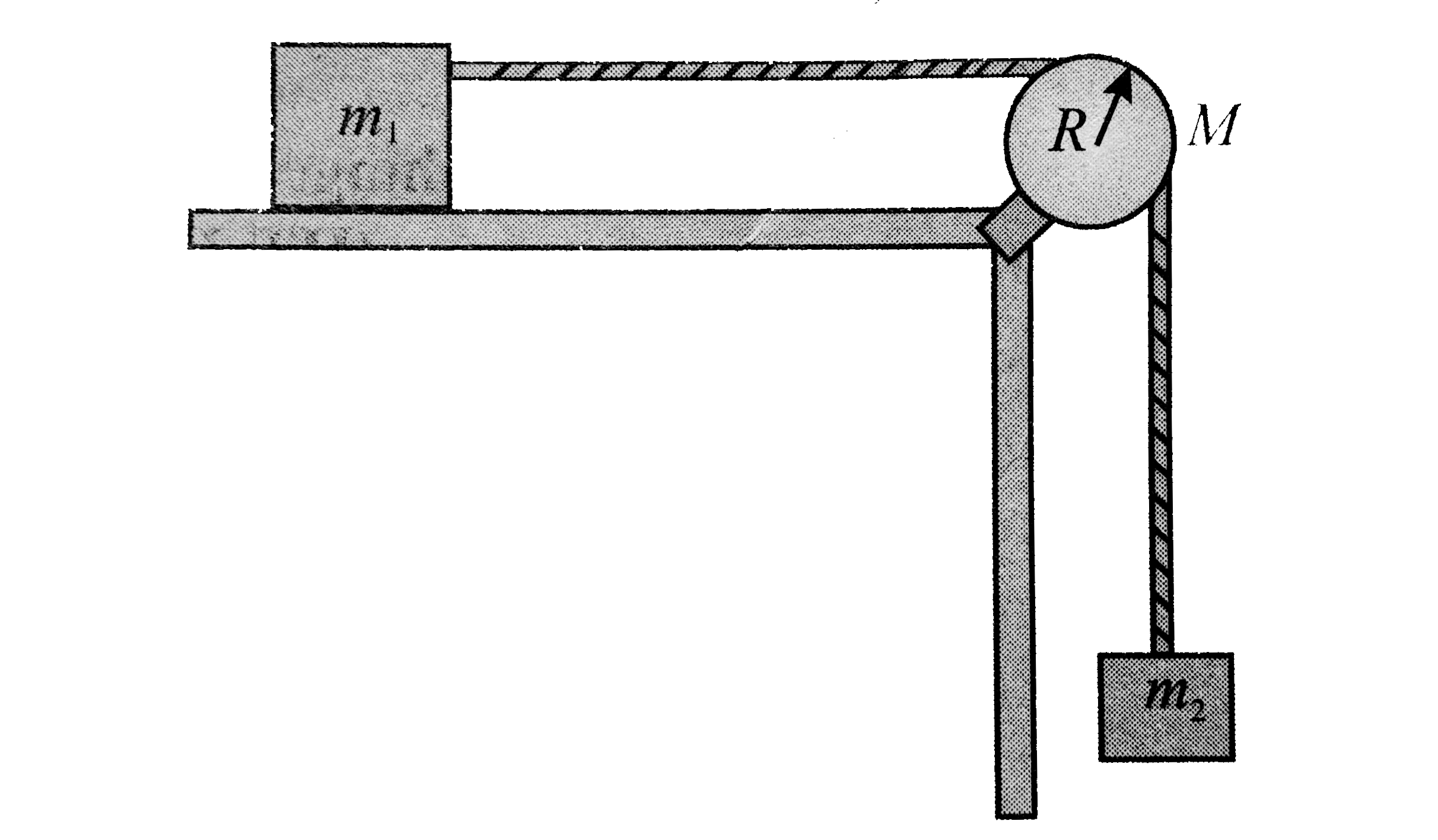 07:02View Solution
07:02View SolutionIn figure mass `m_(1)` slides without friction on the horizontal surface, the frictionless pulley is in the form of a cylinder of mass `M` and radius `R`, and a string turns the pulley without slipping. Find the acceleration of each mass, and tension in each part of the string.
 07:02View Solution
07:02View SolutionA uniform cylinder of radius `R` is spinned about it axis to the angular velocity `omega_(0)` and then placed into a corner,. The coeficient of friction between the corner walls and the cylinder is `mu_(k)` How many turns will the cylinder accomplish before it stops?
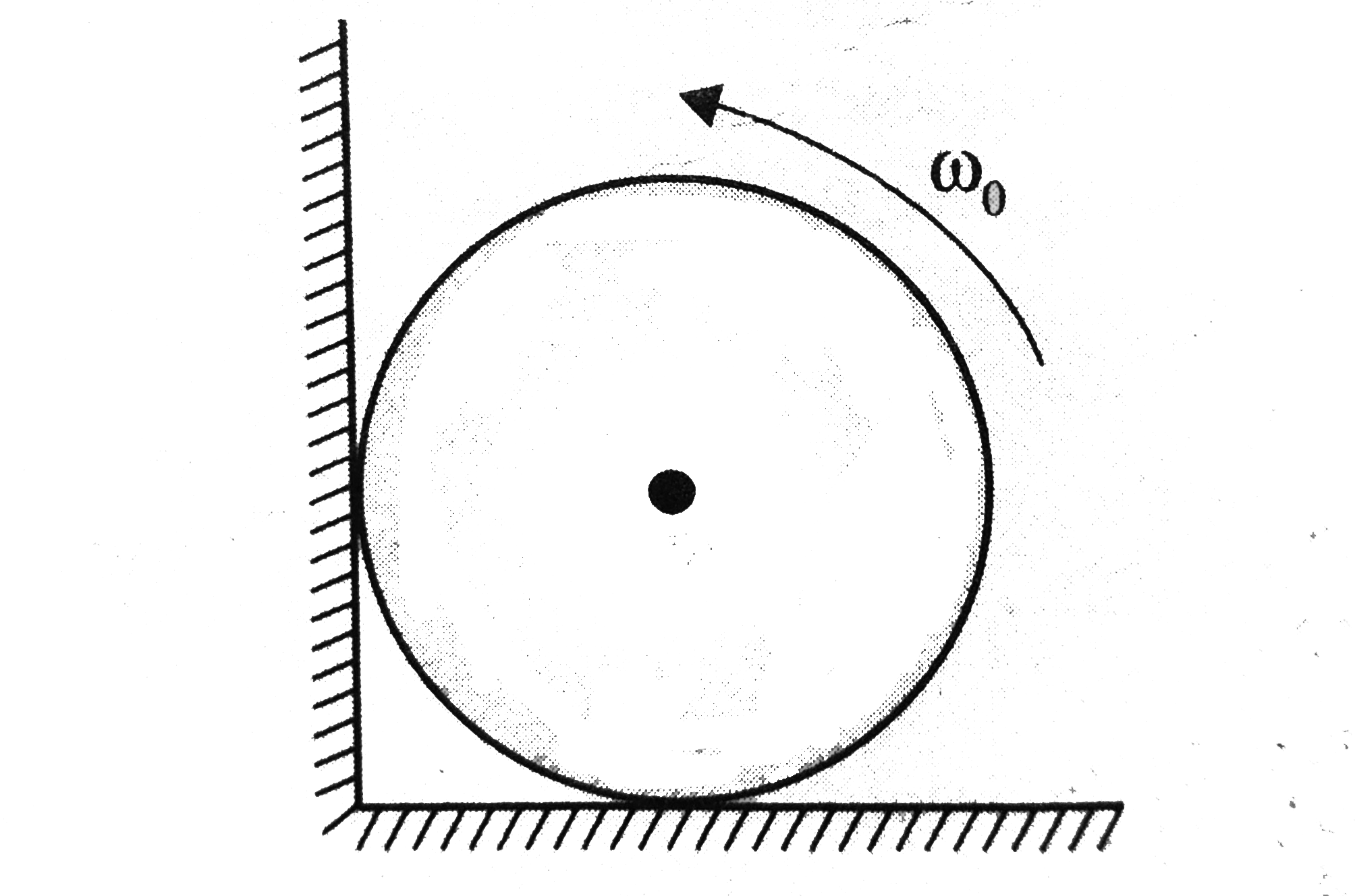 09:06View Solution
09:06View SolutionA uniform rod of length `L` and mass `M` is pivoted freely at one end and placed in vertical position.
a. What is angular acceleration of the rod when it is at ann angle `theta` with the vertical?
b. What is the tangential linear acceleration of the free end when the rod is horizontal?02:56View SolutionThree particles A, B and C each of mass m, are connected to each other by three massless rigid rods to form a rigid, equilateral triangular body of side l. This body is placed on a horizontal frictionless table (x-y plane) and is hinged to it at the point A so that it can move without friction about the vertical axis through A . the body is set into rotational motion on the table about A with a constant angular velocity `omega`.
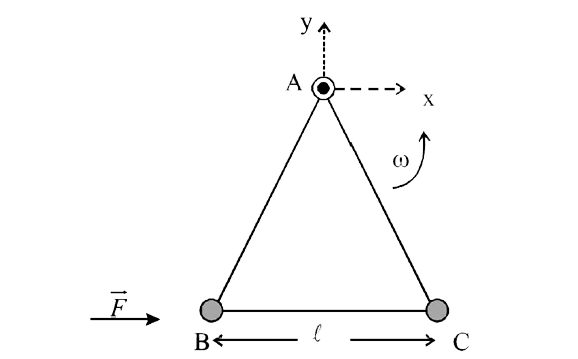
(a) Find the magnitude of the horizontal force exerted by the hinge on the body.
(b) At time T, when the side BC is parallel to the x-axis, a force F is applied on B along BC (as shown). Obtain the x-component and the y-component of the force exerted by the hinge on the body, immediately after time T.08:58View SolutionThe arrangement shown in figure consists of two identical, uniform, solid cylinders, each of mass `m`, on which two light theads are wound symmetrically.
Find the tensions of each thread in the process of motion. The friction in the axle of the upper cylinder is assumed to be absent.
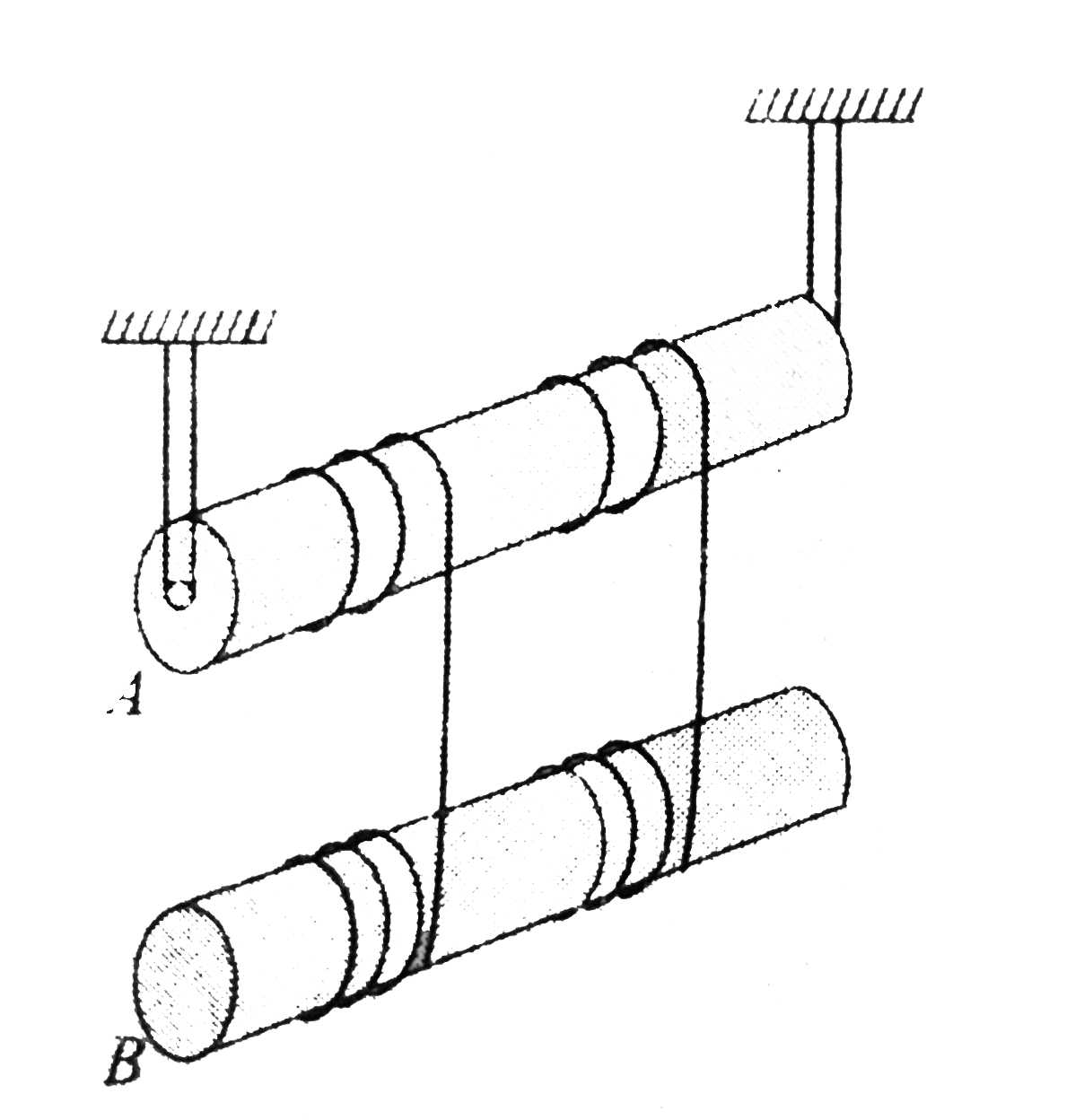 07:01View Solution
07:01View Solution
Illustration questions and complete solutions for chapter RIGID BODY DYNAMICS 1 of CENGAGE PHYSICS (ENGLISH) of Class 11
